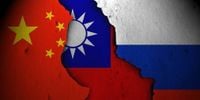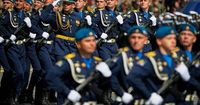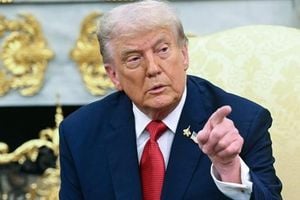In a revelation that has sent shockwaves through defense circles and diplomatic corridors alike, a trove of leaked Russian documents analyzed by the Royal United Services Institute (RUSI) and other military experts points to a covert but deepening military partnership between Russia and China. The documents, reportedly obtained and published by the hacking collective Black Moon, suggest that Moscow has agreed to train and equip a Chinese airborne battalion, potentially laying the groundwork for a Chinese invasion of Taiwan as early as 2027.
According to RUSI’s detailed assessment, the leaks appear largely authentic and describe a comprehensive package of Russian support for the People’s Liberation Army (PLA). This assistance includes not only the delivery of advanced military hardware—such as dozens of light amphibious assault vehicles, airborne armored personnel carriers, and specialized anti-tank self-propelled guns—but also the transfer of technology and expertise crucial for airborne operations. The contracts reportedly specify 37 light amphibious assault vehicles equipped with automatic cannons, 11 light amphibious anti-tank self-propelled guns, 11 airborne armored personnel carriers, and an unspecified number of command and observation vehicles. These assets are expressly designed to support rapid, large-scale airborne operations, a capability that China’s military has long sought to develop.
But hardware is only part of the equation. The documents further reveal that Russia has agreed to provide China with the technology needed to ramp up domestic production of related equipment, effectively multiplying Beijing’s future capacity. Perhaps most critically, Russian instructors are set to oversee joint exercises and provide tactical training to Chinese paratroopers—sharing hard-won experience from airborne combat operations in Ukraine and elsewhere. As RUSI notes, "China still lacks the air maneuverability capabilities needed for an invasion of Taiwan," and Russia’s expertise is seen as a crucial force multiplier for Beijing.
The timeline outlined in the leaks is striking. The materials suggest that China could be preparing for an airborne assault on Taiwan by 2027, a date that aligns with previous warnings from Western intelligence agencies regarding Beijing’s ambitions toward the self-governing island. The strategic calculus is clear: while China has invested heavily in amphibious landing capacity, Taiwan’s rugged coastline and limited suitable beaches make a traditional seaborne invasion a daunting prospect. Airborne airdrop operations—paratroopers and armored vehicles delivered deep behind enemy lines—could provide Beijing with a new and potentially decisive option.
Among the most alarming details in the RUSI report is the mention of Russia supplying China with special-purpose parachute systems known as “Dalnolyot.” These systems are capable of inserting loads up to 190 kilograms from altitudes of 32,000 feet, with a range of 30 to 80 kilometers depending on the payload. The documents even reference a March 8, 2024, meeting in Moscow, where Russia agreed to share performance data on these parachutes in extreme cold conditions—down to minus 60 degrees Celsius—by the end of 2024. This level of technical collaboration, analysts warn, could enable Chinese special forces to penetrate not only Taiwan but potentially other island states in the region, including the Philippines.
Photos included in the leaked files depict what appear to be high-level meetings between senior Chinese and Russian defense officials, reinforcing the impression of a structured, face-to-face partnership conducted under tight security. The files are said to include contracts, technical meeting minutes, travel records, and payment schedules, painting a picture of formalized, ongoing cooperation. According to The Washington Post, a Taiwanese security official—speaking anonymously—summed up the situation: "Military cooperation between China and Russia goes far beyond what has been publicly acknowledged."
The context behind this growing alliance is as important as the details themselves. Since launching its full-scale invasion of Ukraine, Russia has found itself increasingly isolated from the West, facing harsh sanctions and a sharp decline in trade with Europe and North America. In response, Moscow has pivoted eastward, dramatically expanding both economic and military ties with Beijing. As reported by multiple outlets, including Defense News and The Kyiv Independent, this partnership is not merely transactional. It is, in many respects, a strategic realignment with far-reaching consequences for the global balance of power.
Earlier this September, the world was offered a rare public glimpse of this new alignment when Russian President Vladimir Putin, Chinese President Xi Jinping, and North Korean leader Kim Jong Un appeared together at a massive military parade in Beijing. The event, which marked the 80th anniversary of Japan’s surrender in World War II, was as much a display of military might as it was a signal of growing solidarity among authoritarian powers. The parade showcased not only China’s latest hardware but also the increasingly intertwined destinies of Moscow and Beijing.
Officially, China continues to claim neutrality in Russia’s war against Ukraine. However, the evidence of indirect support is mounting. Beijing has maintained robust trade with Moscow and has reportedly supplied dual-use goods—civilian products with potential military applications—to help sustain Russia’s war effort. This ambiguous stance has drawn criticism from Western governments, who warn that such support undermines international sanctions and emboldens aggression.
For Taiwan and its allies, the implications of the Russia-China partnership are sobering. The island’s defense has long relied on the assumption that its geography would complicate any invasion attempt. But as Russia helps China plug its critical gaps in airborne capability, that assumption looks increasingly shaky. Experts cited by Defense News caution that the convergence of Russian combat experience and Chinese resources could present a more complex and potent threat to Taiwan—and potentially to other regional democracies—by the end of this decade.
It is worth noting that while much of the leaked material aligns with known procurement patterns, RUSI does offer a caveat: some documents could have been altered or taken out of context, and no government has formally confirmed the arrangements described. Still, the breadth and detail of the leaks, combined with mounting circumstantial evidence, have left few experts in doubt that the military-industrial relationship between Russia and China is both deeper and more consequential than previously understood.
As the world watches Beijing and Moscow move ever closer, the fate of Taiwan—and the broader security architecture of East Asia—may hinge on how quickly democracies can adapt to this new and unsettling reality.





